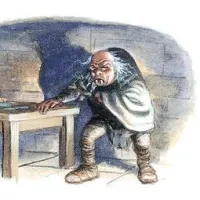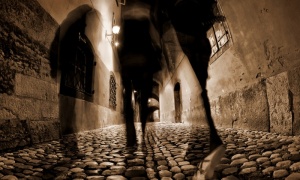Legends of werewolves have haunted the wilderness of Europe since the Middle Ages and the origins of such stories go even farther back in our shared mythos across the world. But no story comes as close to the terrifying reality of an animal (or animals) that became known as the Beast of Gévaudan. The creature, which to this day has not been fully identified, began a campaign of terror on the people of Gévaudan, a small province in southern France during the 18th century. The mysterious and gruesome killings became the most fatal series of wolf attacks in the history of the country. Creating mass hysteria and eventually catching the attention of the highest levels of the government, and even the king himself. Almost three hundred deaths were attributed to the beast’s attacks, most with their throats or chests ripped out by something with sharp teeth and claws. News of a murderous monster grabbed the public’s attention. The press reported extensively on the attacks, describing the beast as a wolf-like creature with russet and black fur, a wide chest, a huge mouth and very sharp teeth. The monster’s first victim was Jeanne Boulet, a 14-year-old girl watching her sheep. Her death was followed by others, almost exclusively women and children. Throughout 1764, the brutal attacks—victims with their throats torn out or heads gnawed off—riveted France. The violence was so shocking, news of it traveled from the countryside all the way to the royal palace in Versailles. What was this beast of Gévaudan, and who could stop its reign of terror?
Gévaudan, a region in southern France (in modern-day Lozère), was just as mysterious as its monster. It had the reputation for being a remote, isolated backwater where the forces of nature had not been full tamed, where the forests were indeed enchanted. It was the perfect place for a Grimm-like fairy tale starring a possibly supernatural creature. But for villagers under attack, reality was more brutal than any book. In three years time, the beast racked up nearly 300 victims, and its legacy lasted long beyond the 18th century. France of 1764 was in miserable condition. The Seven Years’ War had ended a year earlier, with France suffering numerous defeats at the hands of the British and the Prussians. The king, Louis XV, had also lost the bulk of his country’s overseas empire, including Canada. The economic situation was dire and the country was in disarray. Despite the carnage the beast wrought, it served as a perfect foe for a nation with something to prove, a country in need of a cause to rally around. The beast and its victims might have gone virtually unnoticed if not for a burgeoning press. Because political news was mostly censored by the king, newspapers had to turn to other sources of information—and entertainment—to bolster subscriptions. François Morénas, creator and editor of the Courrier d’Avignon, used a new type of reporting called faits divers—stories of everyday incidents in small villages similar to today’s true crime—to tell the tale. His reportage in particular transformed the beast from a backwater calamity into a national affair.
At first, local officials, led by infantry leader Jean Baptiste Duhame, organized a group of 30,000 volunteers to hunt and kill the beast. They even offered a reward equal to a year’s salary for most of the population of the town to whoever was able to successfully kill it. But despite the town’s best efforts, the attacks did not stop. The problem got so bad that it attracted the attention of the king. Louis XV sent two professional wolf hunters, Jean Charles Marc Antoine Vaumesle d’Enneval and his son Jean-François, to Gévaudan to kill the beast. They spent four months hunting wolves, but the mountainous terrain was difficult to navigate and their attempt was unsuccessful. The king removed them from the town, and instead sent his own bodyguard, François Antoine, to hunt the beast. Antoine and his team of men were able to successfully shoot and kill a wolf that was 31 inches tall and 5 feet and 7 inches long. They received their reward from the Louis XV, and for a short time, the terror seemed to have ceased. However, the relief didn’t last. Just a few months later, the attacks started up again, and each description of the beast became more and more fantastical than the last. Some sightings claimed that the Beast of Gevaudan had supernatural abilities, could walk on its hind legs, or was actually a part-wolf, part-man hybrid. With mass hysteria growing and no more help coming from the Louis XV, the locals banded together to try to solve the problem once a for all. A local farmer named Jean Chaste was serving time in prison, but was released to help begin the hunt for the beast. He shot and killed a huge wolf, and is credited with finally ending the killings once and for all. By some accounts, the stomach of the beast was opened up and human remains were found inside, thus proving that Chaste had finally killed the real monster.
Although the attacks reportedly stopped, no consensus was ever reached on what the beast actually was. The debate continues even today, with scholars and historians debating if the beast was indeed a rabid wolf, a young lion escaped from a menagerie, or simply a case of a pack of wild wolves combined with mass hysteria and rumour taken too far. Whatever its real identity, the legend of the Beast of Gévaudan has not been forgotten. Robert Louis Stevenson reported on the incident in his book Travels with a Donkey in the Cévennes in 1879. Now, almost 250 years later, the Beast has become a famous figure in werewolf lore. It made its literary debut with gothic novels like La Bête du Gévaudan and Wolves: An Old Story Retold. Since then, he has been handed down into contemporary media, such as the feature film Brotherhood of the Wolf and the TV drama Teen Wolf. There is even a local museum in Sagues, France, dedicated to the story of the Beast of Gévaudan, retelling the legend for future generations. Even 250 years since the Beast of Gévaudan last stalked the forests and fields of southern France, its fairy-tale-like legacy looms large.

















Leave a comment